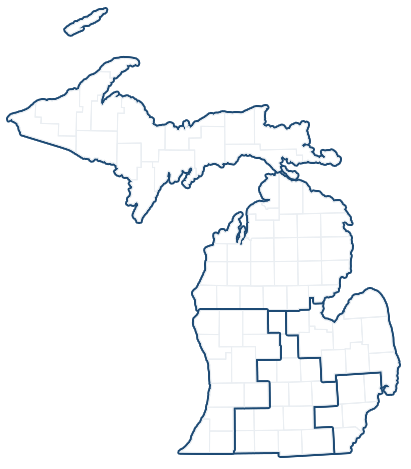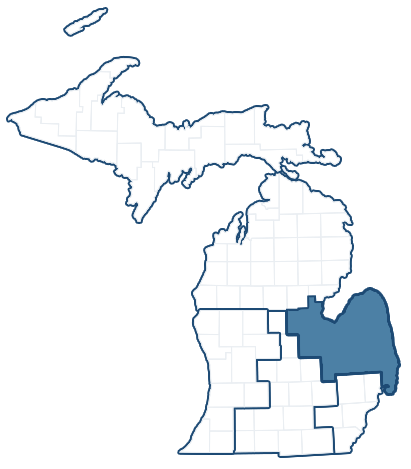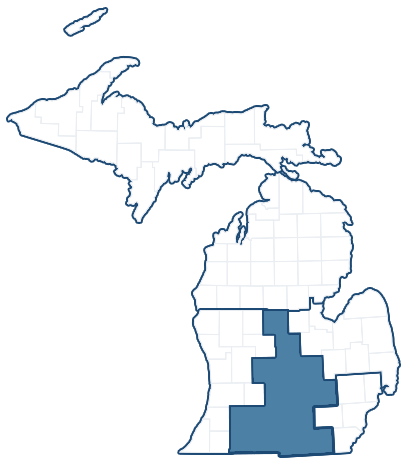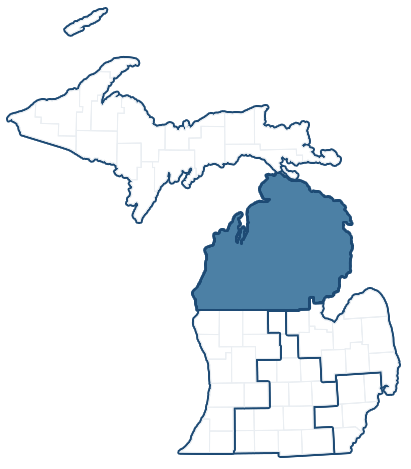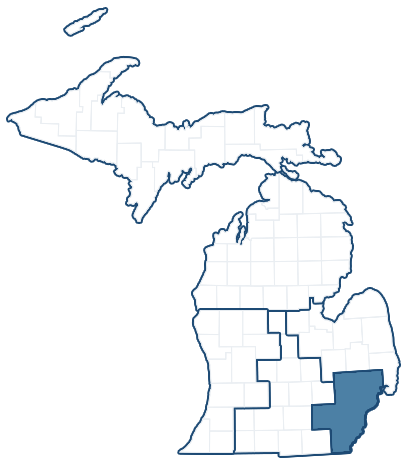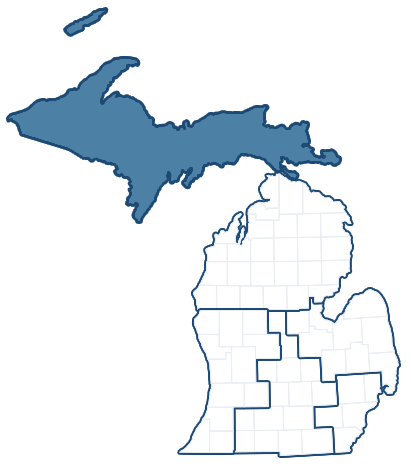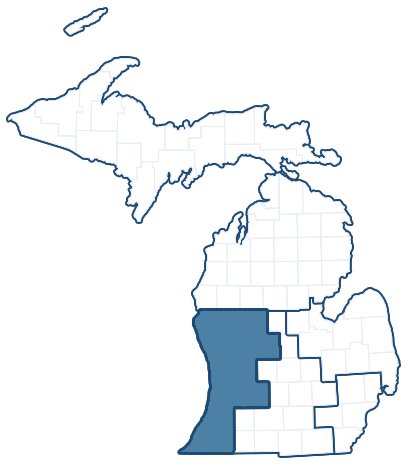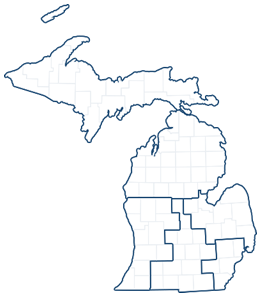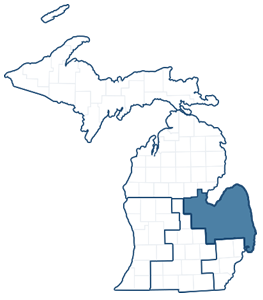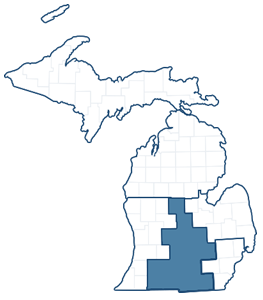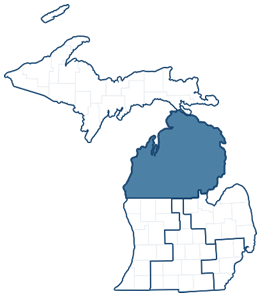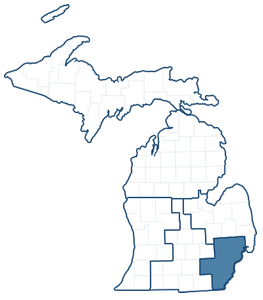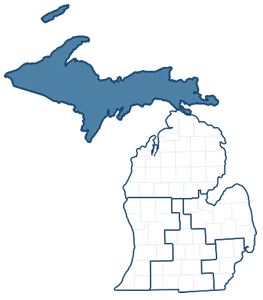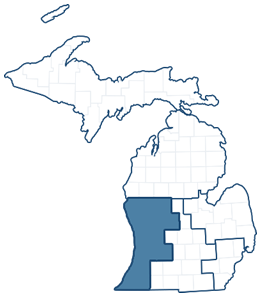Senator Stabenow Highlights Great Lakes Restoration Success Stories Across Michigan, Importance of Federal Funding
Wednesday, August 23, 2017This month, U.S. Senator Debbie Stabenow is highlighting Great Lakes Restoration Initiative (GLRI) success stories throughout Michigan and the importance of federal funding to protect our lakes and waterways. Stabenow today joined Steve Largent, Boardman River Program Coordinator and Trout Unlimited member, and Amy Beyer, Executive Director of the Conservation Resource Alliance, to highlight The Boardman: A River Reborn, a community project to restore the Boardman River. Stabenow authored the GLRI in 2010 and is leading the bipartisan effort to stop proposals to eliminate funding for the Initiative next year.
The current phase of the project has received over eight million dollars through GLRI to reconnect 160 miles of the river by removing three aging dams. It is one of the most comprehensive dam removal and river restoration projects in Michigan’s history that will help improve the Boardman River’s water quality, restore passage for fish and wildlife, and create new opportunities for kayaking and canoeing.
“One in five Michigan jobs are tied to water. It is more important than ever to continue investing in the health of our Great Lakes and waterways,” said Senator Stabenow, Co-Chair of the bipartisan Senate Great Lakes Task Force. “This ongoing project here in Traverse City is an excellent example of how Great Lakes funding is helping to restore our rivers so more Michigan families and visitors can enjoy fishing, kayaking, and canoeing.”
“We are using GLRI funds to leverage local, state and private philanthropy resources to do projects that ensure Northern Michigan continues to thrive as a top outdoor recreation destination,” said Amy Beyer, Executive Director of Conservation Resource Alliance. “The projects provide jobs for contractors, engineers and small businesses which help CRA to restore whole river systems, remove or improve aging infrastructure like dams and failing road crossings, and permanently protect the fisheries, wildlife and freshwater resources for the future.”
“The current removal Boardman Dam in conjunction with the removal of Brown Bridge dam in 2012 and the scheduled removal of Sabin Dam in 2018 will restore the connectivity of the Boardman River from an ecological standpoint and the cold water component that makes all our northern Michigan rivers so special,” said Steve Largent, Boardman River Program Coordinator and Trout Unlimited Member. “From fisherman to paddlers, the Boardman River will provide new opportunities and incredible adventures. As we move forward our new challenge as stewards of this fragile resource is to make sure that these new recreational opportunities are balanced with the ecological health of the river.
According to the University Research Corridor, more than 700,000 Michigan jobs, one in five in the state, are tied to water. GLRI is critical to cleaning up our Great Lakes, beaches, and waterways for swimming, boating, and fishing; fighting invasive species like Asian carp, and protecting our Michigan way of life. Michigan projects have received more than $600 million in funding from the GLRI since its establishment. Michigan has an estimated 2,850 miles of coastal water trails as well as an estimated 1,280 miles of inland water trails. Our canoe and kayak industry annually contributes $140 million to our state’s economy.
The Boardman: A River Reborn Background
The Boardman River is located in Northwest Michigan and runs through Grand Traverse and Kalkaska counties. It is one of the top ten trout streams in Michigan.
In 2004, Traverse City Light and Power discontinued hydropower generation at three dams on the Boardman River and the community decided to remove the dams and restore the river to a more natural state. Phase I of the project included the removal of Brown Bridge Dam in 2012 and the restoration of the natural habitat for fish and wildlife in that area. Phase II of the project has also begun with the construction of a new bridge on Cass Road spanning the Boardman River. The Boardman Dam is currently being removed as part of Phase II and more restoration work will s00n take place. Phase III of the project will remove the Sabin dam.
Great Lakes Aquatic Connectivity and Infrastructure Program
In addition to leading the effort in the Senate on fully funding the GLRI, Senator Stabenow is also championing legislation to protect and restore our recreational fisheries. In June, she introduced the Great Lakes Aquatic Connectivity and Infrastructure Program Act (S. 1332) to improve Great Lakes fisheries and encourage habitat restoration by repairing and replacing aging dams, culverts, and roads. There are thousands of these structures across the Great Lakes Basin that currently inhibit the movement of fish populations. Great Lakes states and tribal governments will be able to recommend grant projects to the U.S. Fish and Wildlife Service to expand fish access to waterways and work to prevent the spread of invasive species when addressing aging infrastructure.
###
Next Article Previous Article



